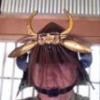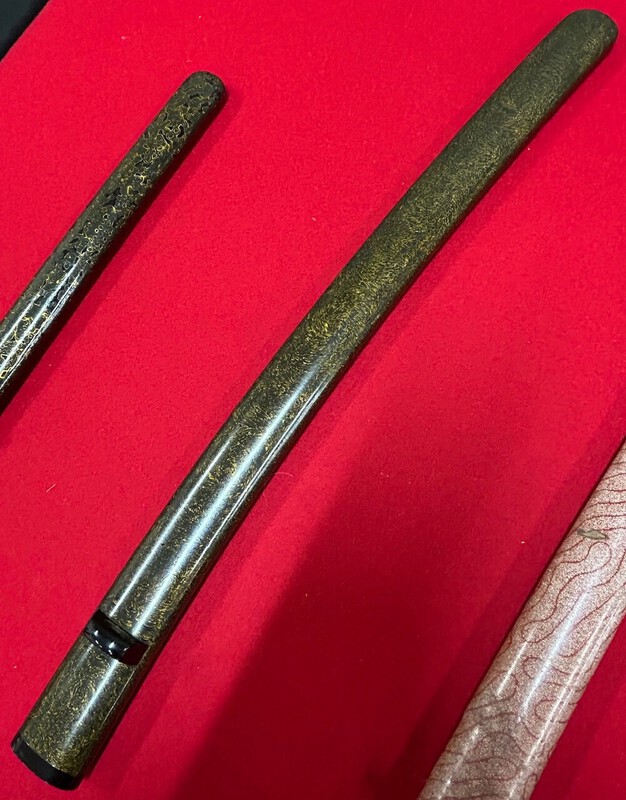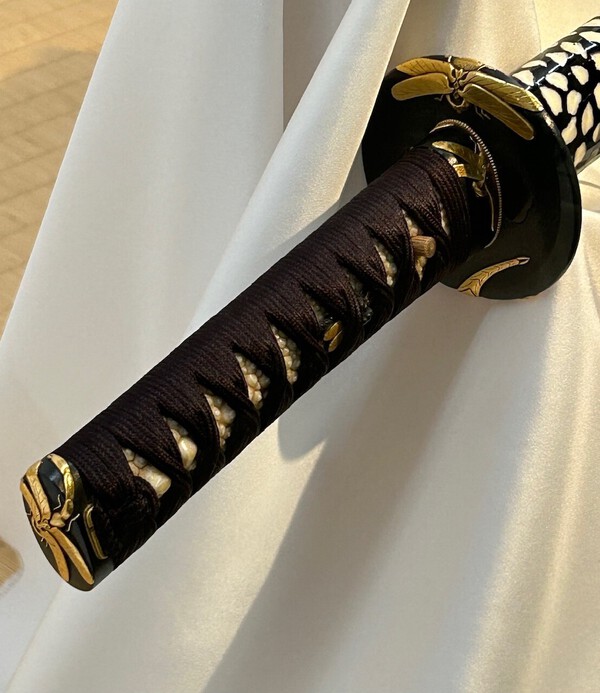-
Posts
13,166 -
Joined
-
Last visited
-
Days Won
228
Everything posted by Bugyotsuji
-
I was thinking yamagane too.
-
You could do both, an internal double-ended screw, plus an outer metal sheath to keep it all straight, then bind with fine cord, and place another similar cord bound section at an equal but opposite location giving it a more balanced look... (?)
-
Such a shame that they have to do this. Sad old world where the laws make life difficult and uncomfortable for everyone, and culture gets abused in the process. What you've done looks like a pretty good fix, you are happy, and you still have the ability to dismantle and travel! (Besides, if you find a better method in the future, that option is till open.)
-
Jiro (but no Taro) Naokatsu. Unless I am missing something, Nobuie is on the front of the tsuba, and the humble artist Jiro who emulated Nobuie has placed himself on the reverse, no?
-
A wire hanger may be too strong, difficult to bend to the right shape, and possibly damaging to the saya. If you do not have the equipment for Brian's approach, Natthaniel's wire idea may be better. Source a section of the right thickness, and play with different shapes of hook. The thing is to do it in your head first, over a day or two, and wait for the answer to crystallize in your brain. You have to work intuitively.
-
Yesterday I attended a lecture on koshirae, the methods and materials used by artisans. It was given in the events hall at the Osafune museum where this exhibition is presently being held. In the room was a large collection of privately-held koshirae spread over the tables for the attendees to handle. One comment struck me about how we think of the samurai being Spartan in their simplicity, but here we have all these gorgeous and flamboyant koshirae, as if rich merchants were wanting to show off their wealth. He gave us examples of some lacquering and embedding processes so time-consuming that no-one today would attempt them. One take-away for me, though, partly to answer your question, Brian, was that almost anything goes. One process, a lacquer swirling pattern for example, involved mixing tofu with the lacquer to slow the drying process. Another koshirae was decorated with what looked like migrating birds, but close examination suggested shark baby teeth. Yet another one had what the experts had declared were ground-down shells embedded into the lacquer, but the owner had determined were the round entrance covers for a shellfish called a 酢貝 Sugai or vinegar shell. (Lunella coreensis.) In other words, although there may be some fleeting acknowledgement of cultural meaning, on the whole artisans and patrons were choosing refreshingly unusual patterns from Nature. Almost as if they were talking points for people living in a rigidly defined static class system. With fish inner ear bones, I am guessing it was solely the rarity factor, almost a game to avoid boredom, "What do you think these are?" that the owner enjoyed inflicting on those who would listen! ’Chidori’ birds?
-
Oli, he said it is signed but he is not going to show us yet. You can see 造, but above that he has blanked it off.
-
This has come up here many times, Walter. Run a search under 'Soten' tsuba.
-
Old kanji 國廣Kunihiro for 国広
-
Grev, according to one book here, he belonged to the 中原 (一派) Nakahara (group) of artisans in Hagi, around Kaei. If so it could well be a nod to his Sensei or working group.
- 1 reply
-
- 1
-

-
Strangely, when I hung up a Noh mask recently, my wife said that the daughters would be scared of it. "No way!", I replied, laughing. Not long after that, separately, both reacted just as my wife had predicted. "Scary!" they said. Not towards the armor, though!
-
BTW, don’t worry if everything is not perfect. You’ll rarely find one in perfect condition, but yours looks as if it has plenty to enjoy. The woodwork has a nice rich colo(u)r. Sakai guns are famous for their bling kirigane metalwork, dividing collectors into those that love this aspect …and all the rest! (I have just come into possession of a rather similar one!) 😊
-

Love when this happens- need signature confirmation help for menuki
Bugyotsuji replied to Mantis dude's topic in Tosogu
You mean Hideoki 秀興, Jack? -
Hello ET! I am just about to go out, but at a glance your fine gun is from Sakai, Osaka, from the early to mid 1800s; it has been converted with nipple and stronger leaf spring from matchlock to percussion fire, around... 1830-1840 ish. (Maybe the serpentine was also changed from ‘shinchū’ brass to iron at the same time, to work as a hammer on the percussion caps.) The barrel may be rusted in, and the stock woodwork has probably shrunk slightly, but some taps with a rubber hammer may help to free it. Remove the ramrod, and stand the matchlock upright, and with your fingertips on the upper stock, knock the barrel out into your left hand. (To start with. If not successful, go to Plan B.)
-

Love when this happens- need signature confirmation help for menuki
Bugyotsuji replied to Mantis dude's topic in Tosogu
Just playing with 為秀 and 秀為 Tamehide, Hidetame, Hidei, Shūi etc. -

Single character on brass lock plate
Bugyotsuji replied to Bugyotsuji's topic in Translation Assistance
https://codh.rois.ac.jp/char-shape/unicode/U+5E02/ Having looked at this page, however, Ichi/Shi 市 does seem to fit in some cases... hmm... -
Greetings, good planet people. This single Kanji was stamped there by a hinawajū locksmith, probably recognized at the time by those around. How many readings can we get from it? So far I can maybe see ネ、令、or maybe the ‘hen’ 示、or 衣? Surely not 吉,市 or 京? The matchlock is not signed but I know the school of gunnery, so my suspicions fall upon Kunitomo. None of the listed locksmiths there have a likely candidate character in their name though. This character might… help narrow down the place of manufacture. 😊


















